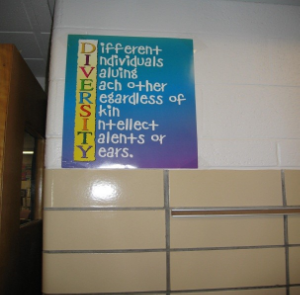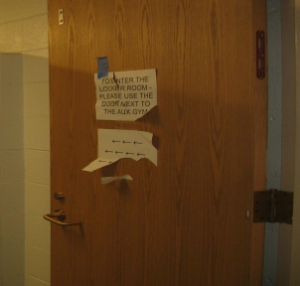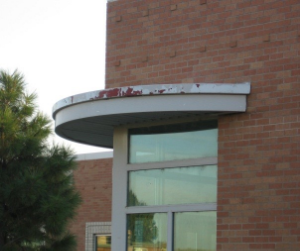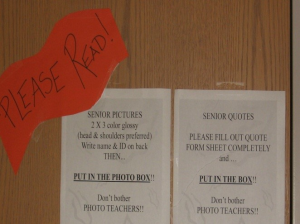As the summer winds down and thoughts of the new school year begin to surface, what changes are you considering to improve your school’s climate?
One component of your school’s overall climate that should not be overlooked, literally, is the visual appearance of your facility, inside and out. The physical appearance of your school sends implicit and explicit messages to your parents, students, staff, and visitors about the quality of the learning environment and care to be found inside.
It’s tricky, sometimes, to notice these visual messages if you’re in the building every day. If you walk by the same broken light, day after day, it’s easy to begin overlooking the problem.
So how do you get an objective, “fresh eyes” perspective? One easy strategy is to designate a few members of your school community to photograph the school, letting them take photos of whatever captures their interest, both positively and negatively. Including multiple school stakeholders in this process promotes and fosters a sense of school connectedness and reveals different stakeholder perceptions and mind-sets. Ask the community members to note what messages about the school are being conveyed by the photos they take.
Here are a few examples of the types of photos that might be taken. When you look at the photos below, what do you think about the school staff, leadership, or students? Would you think that the school staff and leadership are welcoming to parents?
Once school climate learning barriers have been identified, it’s important to eliminate them. Bring your school team together to review the photos and notes, and create steps for improvement. For example, in photos 2 and 4, removing the ripped signs and painting the overhang above the windows are simple, low-cost ways to make the school building more appealing. In photo 5, even though the sign is informational to students, it’s also sending the message that the students are not welcome to ask questions. Changing the negative tone to a positive, solution-driven message is an easy way to convey the same information to students, who might already be uncomfortable asking questions.
While identifying climate barriers is a priority, it’s also important to highlight the things that are working well and build on them. Acknowledging and celebrating the bright spots encourages community investment in the process of improvement and develops a feeling of inclusiveness. For example, in photos 1 and 3, the poster and signs convey the message that diverse populations and parents are welcomed in the school. In photo 6, the poster is sending a message of intellectual safety.
As seen in the few photos in this blog post, a school’s visual appearance influences the school’s climate, which, in turn, impacts student learning and achievement.
How do you assess your own school climate? How will you approach the new school year with “fresh eyes” in order to see and feel what your school’s climate really is?








So true! The visual appearance of a school communicates so much to students, teachers, and parents. Thanks for writing this!
This is a very helpful perspective on classroom and school appearance. The classroom should give off a friendly and inclusive atmosphere to welcome all the students, faculty, and parents.
Teacher often do overlook the school or classroom appearance when so much impact is on meeting objectives and standards. However, the effectiveness of a lesson can be greatly influenced by the atmosphere in which it is delivered. Teaching in an orderly classroom is conducive to a relaxed supportive learning environment.